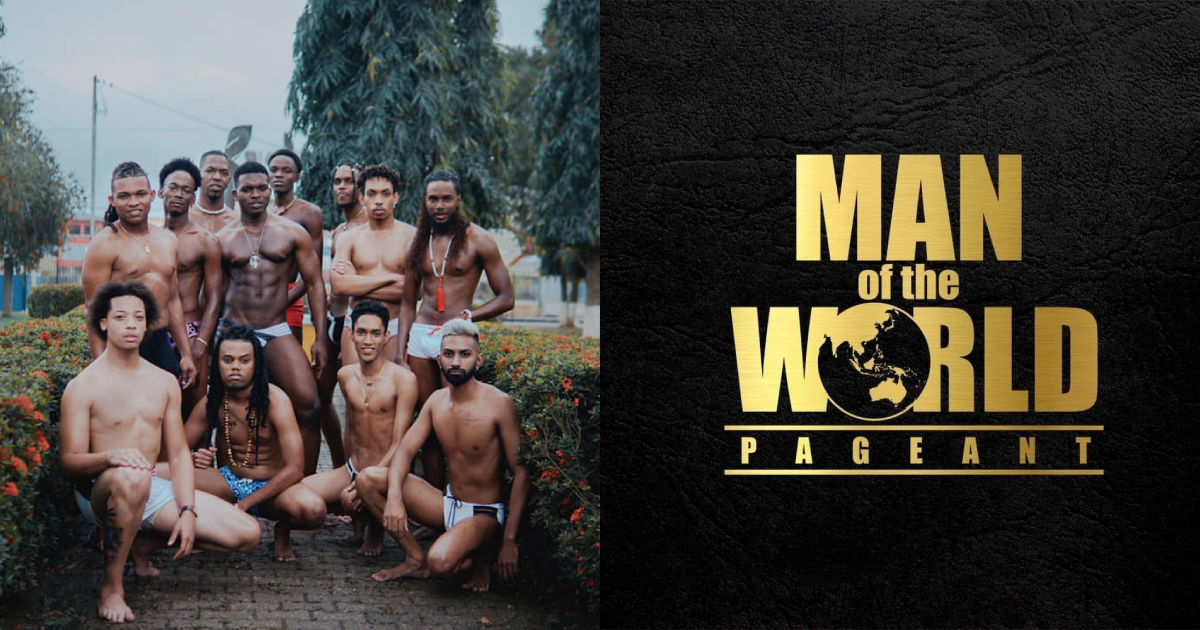When people think of beauty pageants, the first thing that comes to mind are women up on stage, clad in their best attire with their makeup and hair expertly styled. On the other hand, male pageants have also become popularized in several countries, showcasing societal conformities of masculinity and male beauty.
Locally, the Man Of The World Trinidad and Tobago pageant, who’s participants are competing to become the representative for the International Man Of The World competition and the Mister Handsome Worldwide International Events, vigorously became viral on Facebook after publishing official photographs of twelve (12) male contestants posing suggestively, while shirtless and wearing swimwear.
Many followers went online to give their reviews and strong opinions about each male contestant, some in favour of the diversity of male body types, others critical about the overall presentation of masculinity and some turned off by an apparent display of alleged homosexuality. Some comments shared were:
“So the standard for this is skinny men who look like they never see food or puberty? ![]() “
“
“if them is the representation of trinidad then we as a country gone true lmao”
The talk about pageants is intriguing due to the multiple views associated with them. However, by extension, the topic of Caribbean masculinity is also brought to the forefront.
Masculinity refers to the qualities, characteristics, or roles considered typical of, or appropriate for, a boy or man in a particular society or social context; the concept of masculinity varies historically and culturally. (The classic regional study is Barry Chevannes’ Learning to Be a Man: Culture, Socialization and Gender Identity in Five Caribbean Communities published in 2001.)
Therefore, masculinity has been under the microscope for some time now, and especially so in the Caribbean. For some men, the onset of this consciousness of their manhood and masculinity comes in various disguises. In the Caribbean, in many social spaces/homes, a young man might be repeatedly told by an older boy or young man that “not because he may be seeing froth on his urine that that observation in and of itself made him a man”. The implication of this injunction always seemed to be that at the first sight of such an occurrence, there was a sense that at least one was approaching manhood.
While masculinity and femininity are biologically detached, patriarchal social constructions attached masculinity to the male sex and femininity to the female sex. Gendered behaviours are taught and practiced through social institutions and reinforced through peers. This gendered view is widely practiced through the generations that have essentially become a regime of truth accepted by the majority of the populations today making it difficult for the new generation to break through the stereotypes and deviate, often with serious consequences at times. Faced with this regime of the truth of masculinity attribution to males and femininity assigned to females, adolescents are more likely to perpetuate the social construction themselves to fit in with the crowd and avoiding deviant acts that would cause them to be targeted by the rest of their peers.
The majority of comments shared on the Man Of the World Facebook page allegedly seem to judge the contestants on socially constructed masculine characteristics such as muscularity and physical conditioning.
As Caribbean people, the conversation must be had about how we as a society examined perceptions, manifestations and transformations of masculinities, as well as, how men view themselves and their roles in their communities and how these interact with dynamics of gender.
Are we to continue the narrative of judgments and prejudices, inferences, expectations, and attribution processes that are developed around people belonging to each group based on their sex. Or will we put on our ‘big boy draws’ and challenge our socio-economic structures to facilitate a more sophisticated understanding of the problematic views of masculinity in the wider society.
We need to generate community discussions and activism which can positively influence family and household relationships, intimate relationships; challenge the rigidity of the sexual division of labour in the home and, the acceptance of male diversity to change attitudes; to develop patterns of gender socialization of boys for the development of their full potential. This is a tall order, but for the kind of change which is seen as necessary within this new century.


COMMENTS